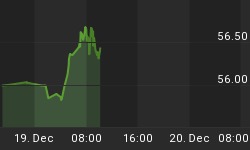The modern-day Montague and Capulet saga involving DirecTV and Dish Network is back, but this time the two satellite-TV giants think they have a chance at a merger despite a history of rejection by federal antitrust officials.
Earlier this week, the New York Post cited sources claiming that the two companies have launched another round of merger talks, hoping that the deal could be revived because both companies are now struggling and present less of a market threat.
The two companies had already been barred from merging back in 2002 over concerns of eliminating competition. Then, in 2020, the Department of Justice (DoJ) told two companies it “would likely have to wait until faster 5G wireless service is more widely available in rural markets.”
According to the NYP report, private-equity firm TPG Capital, which bought a 30% share of DirectTV for $1.8 billion last February, is leading the discussions now. The report said that some executives argue that a merger could give a much-needed boost to the US’ rollout of 5G wireless services
So, based on that logic, the sentiment has changed and the tide may have turned.
5G technology, which promises ultra-fast internet speeds and extra bandwidth and the coverage is rapidly expanding across thousands of U.S. cities. However, 5G availability is still lagging in many rural areas, with many living there not being able to get a streaming television package, among other things.
That’s where DirecTV and Dish come into the picture from a different angle.
The companies are expected to invest as much as $275 billion into 5G infrastructure before 2025. That coincides with the passage in November in the US House of Representatives of Biden’s $1.2-trillion infrastructure bill, which includes $65 billion for broadband improvements.
T-Mobile is winning the 5G race so far, covering 36.7% of the country mostly thanks to its merger with Sprint. AT&T’s 5G network covers 16% off the United States, followed by Verizon with 10.9% of the 5G coverage.
AT&T, which currently owns DirecTV, made the acquisition in 2015 for $49 billion, or $67.1 billion with debt included. For the past couple of years, reports have been emerging that AT&T is trying to sell DirecTV, and that it would potentially be valued at just under $20 billion.
DirecTV currently has just over 15 million customers, down from more than 25 million subscribers in 2017, while Dish has 8.4 million subscribers, down from nearly 14 million.
Still, if the two companies are to actually merge, and the companies management claims it will, whether it’s now or in 10 years, it would create the country’s No. 1 satellite TV provider, with a combined subscriber base (including Dish-owned Sling TV) of about 30 million. That is, if we don’t count for the increasing cable cord-cutting going on these days.
Since the initial merger refusal by the government two decades ago over the elimination of competition, the competition has grown stronger and quite a few new players have emerged.
More Americans than ever are cutting the cable TV cord in favor of streaming services. According to the most recent data, 78% of consumers in the United States were using one or more streaming services last year.
It is projected that a total of 55.1 million Americans will be among those who cut cable service by the end of 2022–the trend that has been increasing rapidly since 2018.
Dish’s Sling TV streaming service has 2.59 million subscribers nationwide compared with Netflix's 74 million subscribers in the U.S. and Canada, and HBO’s 45 million subscribers.
















